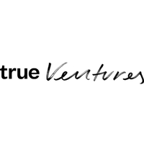Our Mission
Bridging Remote Interactions
Through Technology
Who We Are
High Fidelity develops technologies to connect people across physical distances. From our audio technologies to the applications we build to engage distributed participants and knit together online communities. We work on ways to bridge remote interactions through technology.
The company’s next chapter will be focused on an application to help companies with distributed workforces build connections across teams, driving both organizational performance and job satisfaction.
Backed by top tier investors








